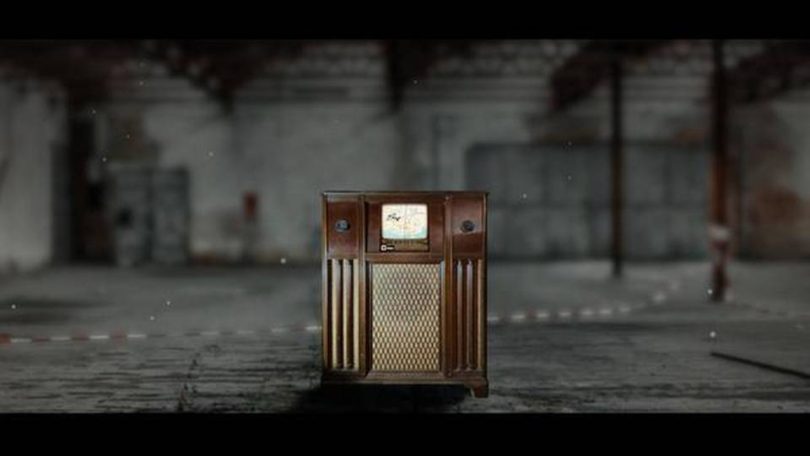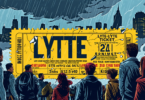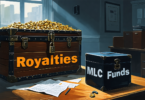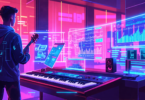After shooting to crypto-fame for buying Beeple’s ‘Everydays’, Metapurse dives into classical music with a choral piece drawn on one of the world’s most fascinating missing person’s cases: Amelia Earhart
It is official: classical music has a clout with the crypto world.
(Subscribe to our Today’s Cache newsletter for a quick snapshot of top 5 tech stories. Click here to subscribe for free.)
‘Betty’s Notebook’, a multi-layered, multimedia choral piece created by Dallas-based Verdigris Ensemble, has been snatched by Metapurse, the world’s largest NFT (non-fungible token) fund, which bid on the programmable master track for $2,15,989 (56.56 ETH), but the sale was for more than US$375,000 in total.
Chennai-based Anand Venkateswaran AKA Twobadour, the steward of Metapurse, along with Vignesh Sundaresan (AKA Metakovan), explains, “‘Betty’s Notebook’ has essentially given birth to crypto music, paving the way for a new and innovative medium of creating and experiencing music.”
Twobadour compliments this unlikely convergence of classical music and the crypto world, “It breaks two stereotypes in 21 minutes [of ‘Betty’s Notebook’]. It proves crypto is not a space for EDM music alone, and that this is a viable and healthy way to make and engage with classical music. Adding the master and 3/4 stems to the Metapurse collection is a true honour, and in our eyes, a natural step in our pursuit to collect the most culturally significant NFTs of our time,” he says.
Sam Brukhman, founder and artistic director of Verdigris Ensemble, leveraged innovative technology to appeal to a much wider and novel audience by selling the work on the blockchain.
Just like a programmable artwork, Stem (or individual programmable component) NFTs are effectively the same as Layer NFTs: they have the ability to change what the current master track both looks and sounds like. So, the ‘most hardcore fan’ will likely own the master track — in this case ‘Betty’s Notebook’ — with other fans owning the stems and choosing which ‘variant’ of their stem is currently active on the master track.
So far, musicians including The Weeknd, Pink Floyd and DaBaby are delving into programmable stem NFTs, while other NFT music ventures have been pursued by Doja Cat, Eminem and Keyon Christ.
What’s the deal with Betty?
The history behind ‘Betty’s Notebook’ has been the source of controversy over the years. In 1937, in St Petersburg, Florida, 15-year-old Betty Klenck recorded what she believed was pilot Amelia Earhart’s distress signals and final words breaking through her family’s shortwave radio, in a notebook alongside sketches of mid-century glamour models and other ramblings.
Though neither Earhart’s plane nor body were ever recovered and Klenck’s story was dismissed, the latter insisted her account was true throughout her life. The resulting work ‘Betty’s Notebook’ premiered in February 2019 in several Dallas venues.
But what exactly comprises this creation? There are four stems, each sold as separate NFTs (MP3 files imbued in algorithmic code). One is ‘The Choir’, the 16-person Verdigris Ensemble singing the voice of Amelia Earhart and her disappearance.
Then there is ‘Betty’s Voice’, a late-in-life interview with Klenck herself narrating what she heard. ‘Betty’s Radio’ is a piece of jazz songs, also composed by Reeves, that recall the music Klenck may have been listening to on that July evening. And finally, ‘Betty’s Choir’ sees Verdigris creating a choral complement from Betty’s voice, inserting pitches and overtones from a spectral analysis of her speaking voice into the overall texture of the piece.
That said, ‘Betty’s Notebook’ is physically set up in a vintage 1930s wooden radio console repurposed to include an LCD screen displaying digital art and playing the latest iteration of the four-stems combined.
The accompanying digital art — also inspired by the sketches in Klenck’s notebook of vintage pinups and airplanes — is animated by Emmy Award-winning graphic artist Bryan Brinkman (NBC’s The Tonight Show, Saturday Night Live). Metapurse has confirmed that the physical component will be available to lend to museums interested in displaying this polychronic sound and digital art installation piece.
When asked about what other genres Metapurse would be keen on investing in, Twobadour responds, “Percussive styles; programmable music opens up innumerable permutations and one can only imagine what different percussive stems can do for vocals in a specific metre. Jazz comes to mind, also rural South Indian music!”
Source: The Hindu







